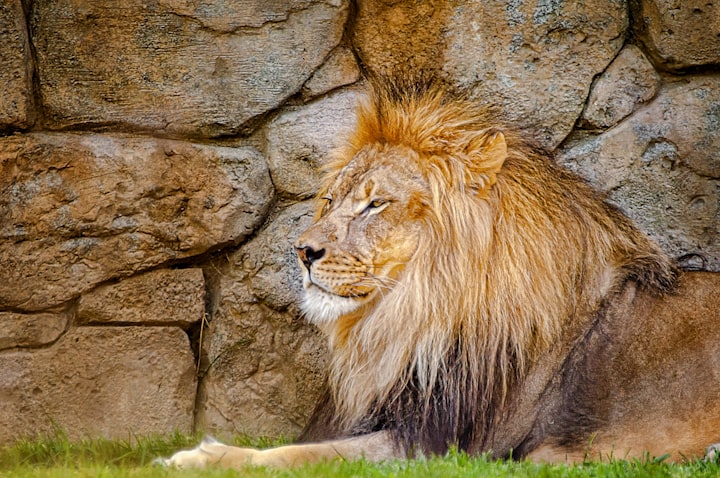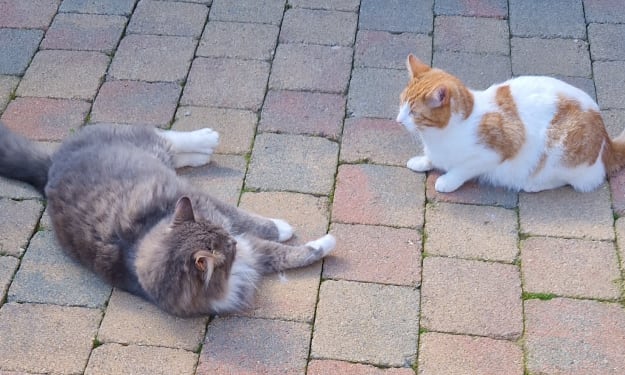Dogs Are the Most Faithful and Consistent of All Our Companions
Monkey’s Love

I didn’t want to wake up. I could ignore Scruffy nudging me with her nose, but the leg kicking my belly was persistent. I groaned and rolled over. The bed was wet. I turned on the light as Scruffy’s first puppy made its entrance into the world.
As I held the first pup in my lap, a second puppy was born. Scruffy ripped open the birthing sack and nudged this second puppy towards me.
Scruffy’s second-born was a strange-looking pup, no doubt due to her heritage, her mother a Blue Heeler cross with her dad a melting-pot mongrel, identifiable only as a terrier of some sort. My Gran paused long enough to shake her head and exclaim, “Only a monkey’s mum could love a face like that.”
And so, Monkey she was named.

As neither my Gran nor I could bear to part with her, Monkey found her home with us. Monkey’s looks changed from the strange to the unusual, her Blue Heeler coloring mixed in with shaggy black fur. Although she retained the intelligence of her Blue Heeler heritage, her body shape was unmistakenly terrier.
A few weeks later, it was time for me to move out of home. I'd planned to take Scruffy with me. But Monkey was busy living up to her name, hanging about underneath Gran’s feet and presenting herself as a tripping hazard. Still nervous from the trauma she experienced when she was younger, Scruffy preferred to sit under the kitchen table, making her the perfect companion for an elderly lady.
The two dogs colluded to decide their respective humans.

As time passed and Monkey developed from a mischievous but playful puppy, she began to embody a personality mix that would make a feminist proud. She was protective, independent, and fiercely loyal, yet she carried all these qualities with a ladylike dignity.
Monkey became my constant companion. She’d sit by my side as I did my arsenal of treatments — nebulizers and physio were weapons in the battle my body waged against Cystic Fibrosis (CF). When I did home IV treatments, she’d stay up late and sit with me while I injected the last antibiotic dose of the day.
Ever loyal, Monkey spent many nights in the bathroom sitting next to me when my enzymes had not worked quite how they should. And it was Monkey who kept me company the night I had a massive bleed, her presence a silent comfort as she let me know she was there, that I wasn’t alone as I spat blood into tissue after tissue.
The year Monkey turned 17 was hard for both of us. Liver problems started to impact her health; her prognosis wasn’t good. At the same time, my body was beginning to lose not just the battle but the entire war. In end-stage CF, my lungs were barely functional. Clinical diagnosis: respiratory failure, stage 1.

Virtually housebound, I was on the waitlist for a lung transplant. To keep my body as strong as possible, I made a point of walking Monkey around the block each day. A walk that once would have taken us both a few minutes took the better part of an hour.
Soon I needed oxygen to walk, so our daily stroll consisted of a 300-meter walk to the stop sign and back. In one hand, I held Monkey’s leash. With the other, I dragged a trolley holding my oxygen bottle. Each turn of the wheels accompanied by a loud clicking.
I stopped midway to catch my breath. Monkey stopped with me. “C’mon,” I said. “Let’s get this over with.”
Monkey sat, refusing to budge. I pointed to the stop sign, “I reckon I can make it. Surely you can.”
Monkey was resolute there would be no more walking that day. I turned around and headed home, Monkey trotting happily beside me. It was the last walk we ever took. Instead, a generous 20-meter cord attached to the oxygen concentrator allowed me to walk around my house.
Monkey discovered if she was too tired to follow me, sitting on my oxygen cord was an effective way to make sure I couldn’t go anywhere without her.

Like the progression of CF, respiratory failure also has different stages, and I entered into stage 2 when oxygen alone was no longer enough to keep me breathing. Instead, to sleep, I needed to crank the oxygen up higher, slip on a mask and turn on the BiPap machine.
Although the technical term for BiPAP is “noninvasive ventilation,” Monkey considered it somewhat invasive. Even under the best of circumstances, she wasn’t fond of me breathing near her face. Now, not only was my breath foul, scented by decay from my damaged lungs, it also sounded remarkably like Darth Vader with a head cold.
To add insult, the BiPAP also emitted a steady stream of air. But it was Monkey’s duty to look after me. She sniffed the air, her nose upturned. Then circled twice and settled her backside into my armpit. She was close to “look after me,” but her face was away from the air stream emitted by the BiPAP.
The days merged into weeks, then months, as I waited for the call that would change everything. Neither of us was capable of moving very far or very fast. I would spend my mornings in bed, BiPAP on, breathing for me as I read, with Monkey at my side.
At midday, I’d switch over to oxygen only. It was harder to breathe, but the 20-meter cord allowed me a little more movement compared to being bedbound on the BiPAP. Monkey and I slowly made our way to the kitchen for brunch. Next, Monkey would stretch out on the bathroom tiles while I sat under the shower.
After that, we’d head to the lounge room. Either we’d share the couch, or Monkey would lie on the floor beside me. She often tired in the afternoon, so she’d have a nap while lying on my oxygen cord, content with the knowledge that any movement I made would wake her.

I had one job during this time: to keep breathing — a skill at which my wonky lungs have never been particularly proficient. The effort required to lounge around breathing cost me half a kilo every week, despite my calorie intake levels exceeding three times the daily requirements.
Weight loss was another thing I shared with Monkey. Always a fussy eater, Monkey was now more selective than ever. She was barely eating, and each week she seemed a little thinner. As I clung to life by my fingernails, I knew that sooner rather than later, we were both going to run out of reserves.
When the phone rang at nine a.m. one morning, Monkey watched me struggle to unhook the BiPAP to take the call. She rested her head in my lap as I answered the phone and learned that I had been matched to an organ donor and needed to make my way to the hospital urgently.
While my husband, Grant, made his way to collect me, I spent some time patting my faithful friend, hoping I’d get to see her again.
Five days after my transplant, during my clinical visit, Grant asked my medical team, “When will Sandi be able to visit her dog?”
I looked at Grant, and the expression on his face told me that he didn’t believe Monkey would live long enough to see me come home. While my body was healing, and my wonderful new lungs were breathing without effort, Monkey was fading.
My medical team stated I needed all my tubes and drains removed to minimize infection risk. It gave me a target to focus on — I was acutely aware that the clock was ticking fast for my faithful friend.
Eight days after my transplant, my team removed my last drainage tube. The following day I received the clearance to leave my room. Grant took me down to the car park in a wheelchair where Monkey was waiting.
My beautiful girl, who had stuck with me through thick and thin, was delighted to see me. Her ears pricked up; her tail wagged, but she didn’t have the strength to climb down from the back seat. So, I gingerly climbed into the back seat.
Monkey’s tail thumped joyfully as I sat. Monkey started to move her face away from my breath as I drew closer, but then she caught the scent. Monkey sniffed, cautiously at first, then big joyful breaths. Monkey quivered until I thought she might jump out of her skin with excitement. Her tail wagged faster and faster. I looked into her beautiful eyes and hugged her tight.
That was the last time I saw my beautiful Monkey dog. The following day she crossed the Rainbow Bridge. I’ve always believed that she hung on that final year to make sure I was okay. That she knew, the uncanny way that dogs do, that I was no longer dying.
My breath carried a message to her. A message that no longer spoke of death and decaying lungs.
Instead, my breath was sweet and fresh; it sang with the promise of tomorrow.
It told Monkey that I was no longer dying. I was going to be okay. She had done her duty, and it was okay for her to let go.


Sandi Parsons is the author of "Pepsi the Problem Puppy," a chapter book based on the real-life shenanigans of her own puppy, Pepsi. She lives with her favorite husband and a house full of problem puppies.
"Dogs Are the Most Faithful and Consistent of All Our Companions" was first published in an abridged form as Monkey’s Love for Please See Me, Issue #4, Hope 31st March 2020
About the Creator
Sandi Parsons
Sandi Parsons lives and breathes stories as a reader, writer, and storyteller. Subscribe to my newsletter & receive my free ebook The Last Walk → https://bit.ly/3cGvsPB






Comments
There are no comments for this story
Be the first to respond and start the conversation.